Remember the early days of pay-per-click advertising? Back when everyone was trying to figure out how to get the most and best traffic out of every display and paid search ad?
Those were good days for paid search marketers. These days, however, optimizing for traffic quality seems to have taken a back seat to optimizing your user experience.
To be honest, that shift in focus makes perfect sense.
If you don’t have a great landing page or site experience, it’s going to be hard to convince all of those hard-won clicks to convert…and if they don’t convert and become paying customers, it doesn’t matter how high-quality those clicks were, right?
But here’s the thing, just because A/B testing and conversion rate optimization can improve your conversion rate, does that mean testing is more important than traffic?
To answer that question, let’s run through a quick hypothetical situation:
Running Some Numbers
In our scenario, let’s say that you’re running ads on AdWords. Your site/landing pages are decent and you’re paying about $4 per click (on average).
You just spent $20,000 on a campaign that produced 5,000 clicks.
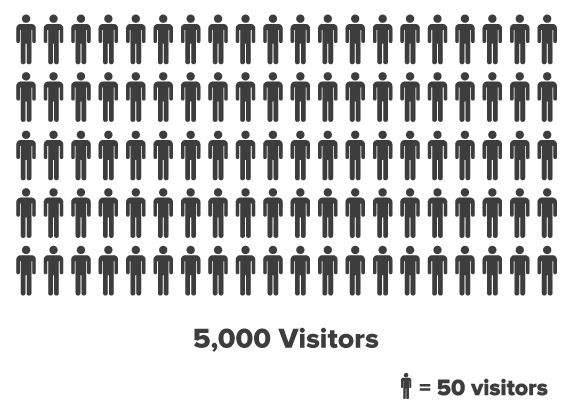
Not too shabby, right?
Well, it’s not bad at all…unless your traffic isn’t interested traffic.
This is where things get complicated The average account using paid search ends up wasting 76% of its budget on search terms that will never convert! In other words, 76% of your ad spend went towards traffic that isn’t ever going to convert.
In your hypothetical campaign, that means $15,000 of your ad spend was wasted.
Now, there’s always the chance that some of these clicks were accidental. Or, they were intentional, but the user was confused about what your business sells. I could write a whole article about the reasons why the wrong people are clicking on your ads.
But, the fact of the matter is, out of 5,000 hypothetical site visitors, only 1,250 of them are even potential customers.
That means that your ad spend effectively only paid for this:
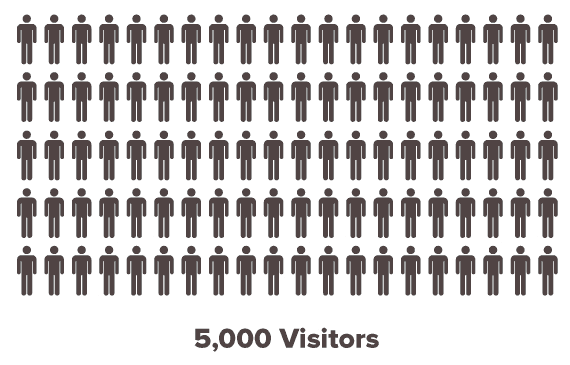
That crowd’s nowhere near as big, is it? And what’s worse, while you’re paying $4 per click, you’re actually paying $16 per relevant click.
But hey, that’s nothing that can’t be fixed by testing, right?
Testing
Now, let’s assume that you are all about marketing best practices, so you were A/B testing your landing page while you were driving it all that traffic.
But remember, while it looked like you were testing 5,000 visitors, only 25% of them were really interested enough to come close to converting.
So it looked like you were testing this:
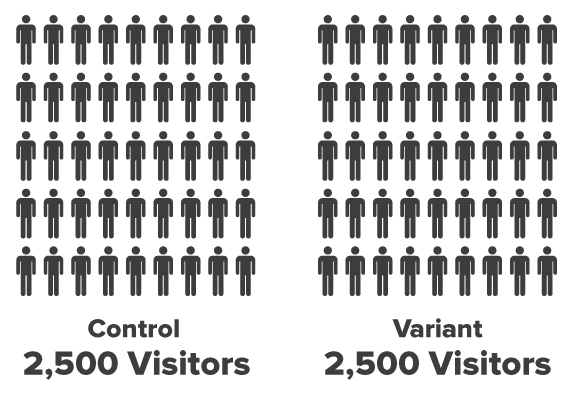
You were really testing something more like this:
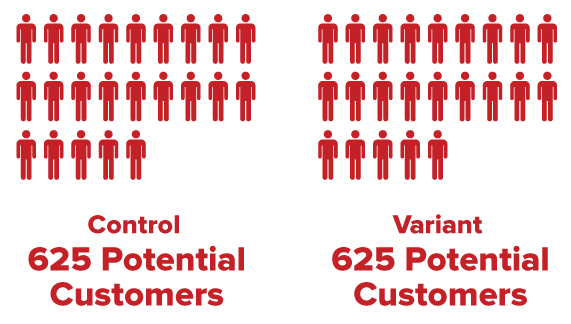
After all, if that extra 75% of your traffic has no chance of converting, they’re not going to convert just because you ran an A/B test.
Looking at your relevant traffic, 100 conversions come through your control (variant A) and 120 conversions come through your new page (variant B):
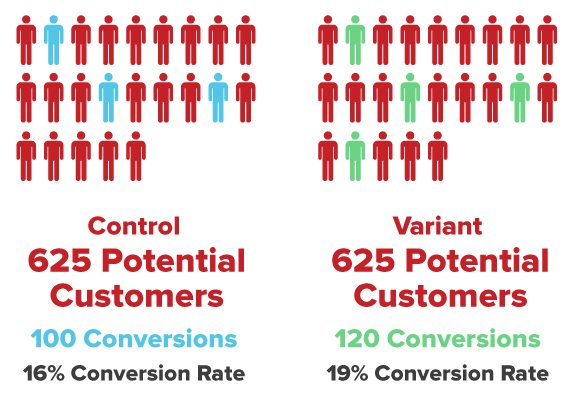
Awesome! So it’s pretty clear that your relevant visitors resonated with your variant a lot better…about 20% better.
At a cost-per-click of $5, you went from paying $25 per conversion to paying $20.83. Talk about a great testing win!
…or maybe not…
Before we can celebrate, we should remember that in this hypothetical situation you didn’t pay for just 1,250 visitors.
You paid for 5,000 visitors.
So your test really looked like this:
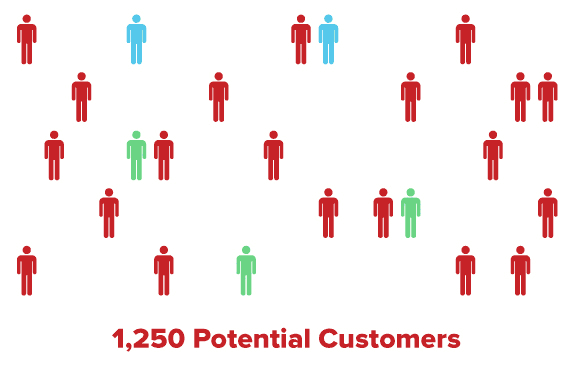
And those test results don’t look nearly as exciting anymore…
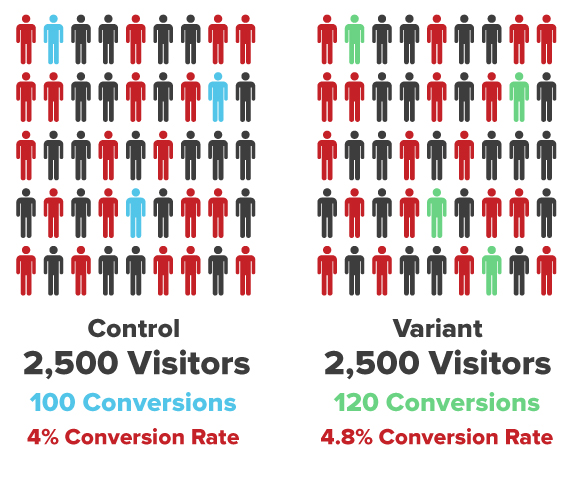
Now, don’t get me wrong, the test was still a success. The conversion rate still went up by 20% and you know that variant B is the better option.
But all that bad traffic you had to pay for means that your conversion rates of 16% and 19% are actually 4.0% and 4.8%. You know what that mean for your cost-per-conversion? It’s a whopping $83.33.
Ouch.
Remember, the cost-per-conversion for the control in your test was only $25 when we were looking at interested visitors. If you had focused on improving traffic quality instead of testing and stopped paying for just 27% of those useless 3,750 clicks, your cost-per-conversion would have dropped to $80.
So…What if You Stop Spending on the Wrong Traffic?
Clearly, if your ads are driving wrong traffic (which most paid search advertisers are), testing may not be the best way to improve your marketing. But this was all a hypothetical, right? Can you really improve your cost-per-conversion by improving traffic quality?
Well, we’ve used this tactic over the years for more clients than I can count (and I can count pretty high). Believe me, improving traffic quality has a huge, exponential effect on cost-per-conversion.
Here’s a quick case study:
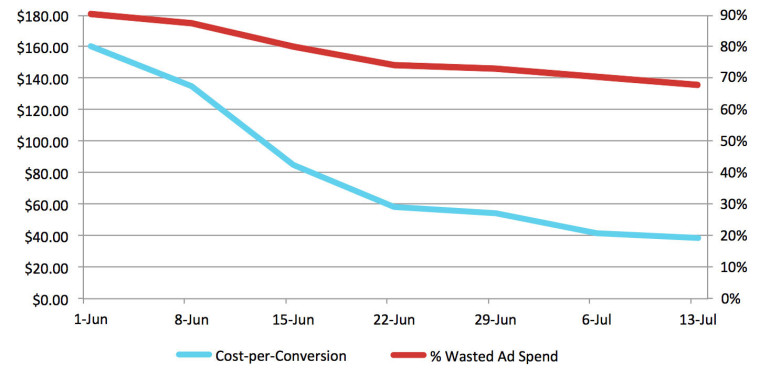
For this specific client, taking their wasteful ad spend down from 91% to 68% cut the cost of a conversion from a whopping $160 to just $39—in just a few weeks.
And it’s not just this client, I’ve seen these sorts of results countless times.
Now, I’m not trying to say that you shouldn’t test your sites. I’m just trying to point out that your tests will always be more effective when you are testing proper, relevant traffic.
So Which Matters More?
Which should you be focusing on? Traffic, or testing? Now, I’m about to sound like a high school counsellor, but it really depends on you.
If you have campaigns that are driving tons of highly relevant traffic, by all means, start testing and get every possible conversion out of your clicks.
But, if you’re like the majority of businesses, then it’s likely you’re wasting a great deal of your budget on the wrong kind of traffic. You’ll get the fastest results from refining your traffic.
Start with these three things:
- Establish a defined audience. Who do you want looking at your site? What pain points are most prevalent for them? Are your ads in line with the proper pain points?
- Tune up your targeting. Are you actually targeting the correct audience? Are the right demographics in your sights?
- Get a little analytical. Do you have clicks that are bringing in sales and conversions? Do you have some marketing channels performing better than others? Are your results justifying the amount that you’re paying for them?
As soon as you know that your marketing is getting the proper traffic to your site, you can start testing and truly get your campaign’s performance optimized.
Conclusion
So, does traffic quality still matter? Absolutely! In fact, I would venture to suggest that for most businesses traffic optimization is more important than site testing.
Of course, if you have the resources and the time to work on both your traffic and your testing right now, that’s fantastic, get to it. If you’re like most paid search marketers, though, the quickest route to increased profitability is traffic optimization.
Traffic or testing—given those options, which would you pick? Is there something else you work on that enhances either of these?
Image Credits
Featured Image: pikselstock/DepositPhotos.com.
All in-post images and GIFs by Andrew Maliwauki of Disruptive Advertising. Used with permission.




